Lifeline Cost and Pricing
A pioneer in providing at-home and mobile alert systems

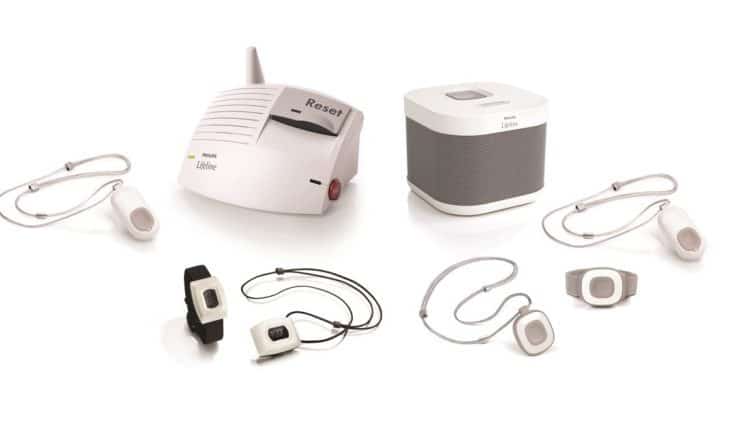
SafeHome.org may receive compensation from some providers listed on this page. Learn More
We may receive compensation from some providers listed on this page. Learn More
A pioneer in providing at-home and mobile alert systems


Lifeline offers flexible medical alert systems for aging adults who need options. Their newest devices — including their On the Go alert device — come equipped with cutting-edge technology to help keep your loved ones safe no matter where they are or what they’re doing.
There is a pretty significant drawback, though. If you read our most affordable alert system guide, you will see that Lifeline isn’t the cheapest medical alert brand out there. But when it comes to reliability and advanced location detection, Lifeline is a top medical alert system.
The best features of this system
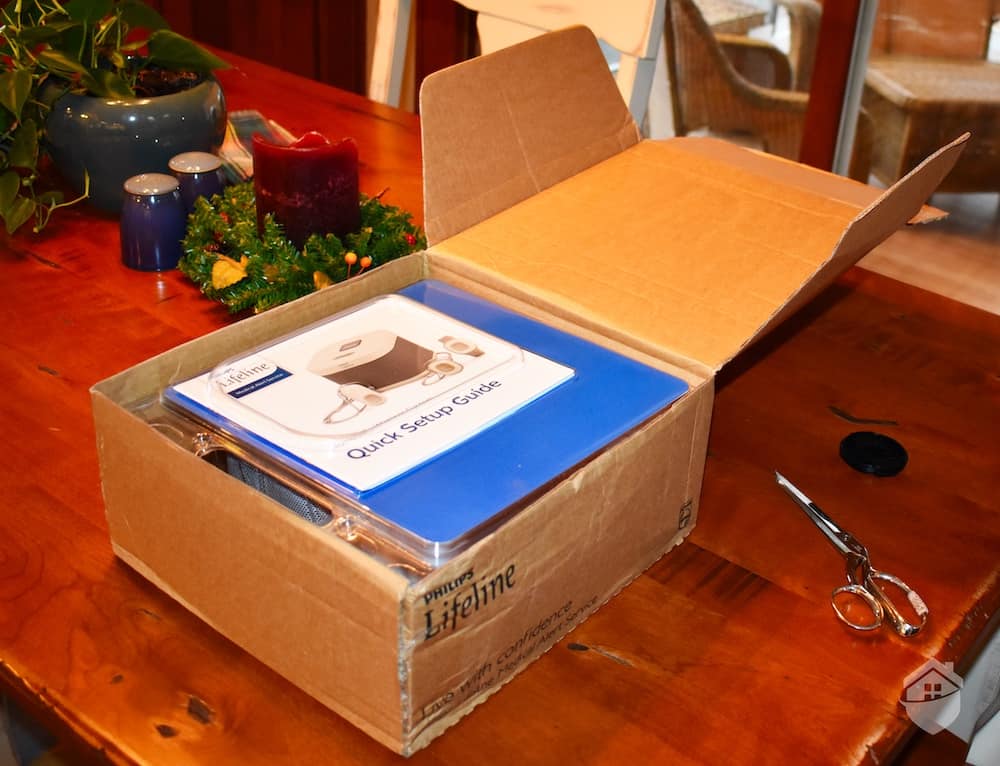
Homesafe Packaging
Check out more recommendations from the SafeHome team:
Lifeline allows seniors to live at home (and on the go) with confidence and peace of mind. Their alert plans start at $29.95 per month and range up to nearly $60 per month. Sure, it’s a little pricey — as I’ve tried brands that only charge $19.99 per month — but Lifeline does have some redeeming qualities. Take a look at the breakdown of monitoring prices and other fees for each system.
| Lifeline Package | Monthly Monitoring Fee | Equipment Price | Activation Fee | Installation Fee |
|---|---|---|---|---|
| HomeSafe Standard (Landline) | $29.95 per month | $0 | $79.00 | $99.99 |
| HomeSafe Standard (Cellular) | $43.95 per month | $0 | $79.00 | $99.99 |
| HomeSafe With AutoAlert (Landline) | $44.95 per month | $0 | $79.00 | $99.99 |
| HomeSafe With AutoAlert (Cellular) | $58.95 per month | $0 | $79.00 | $99.99 |
| On the Go | $49.95 per month | $0 | $99.95 | – |
Now there are a few hidden fees we found with Lifeline’s systems. That activation fee, in particular. With any new in-home system, you’re automatically going to be charged $79.00 right out of the gate, and with the mobile system, it’s $99.95. We should also talk about the optional professional installation. That’ll run you $99.99, but we don’t recommend opting for it. These systems are extremely easy to set up right out of the box, so save your money for something else.
One thing you may like is that Lifeline offers free equipment for its systems. In addition, they don’t require long-term commitments or contracts. Still, at $29.95 per month for a landline plan, it’s a bit steep, especially considering that top-reviewed Bay Alarm Medical starts at $19.95 per month for similar coverage.
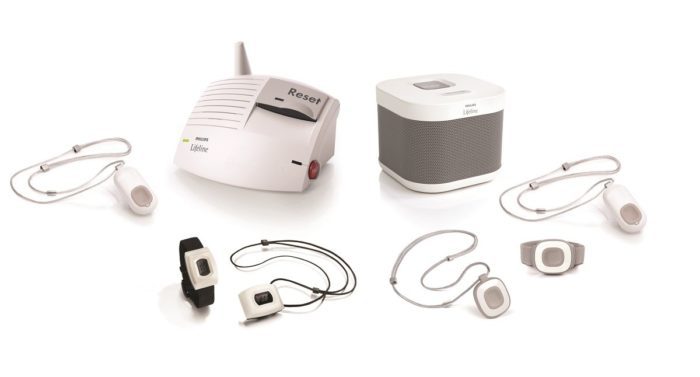
Lifeline Equipment
One thing to keep in mind when comparing prices is that Lifeline includes in their monthly fees a few costs that other medical alert companies charge as extras. One of these things is fall detection, which is usually an additional $5 to $10 monthly cost. In addition, many companies charge for shipping (as much as $15). However, this cost is part of Lifeline’s installation fee.
FYI: The length of time, or “lie time,” that someone who has fallen and is unable to get up on their own is significant. Researchers determined that a lie time of 72 hours or more increases mortality by 67 percent.1 This is the reason that SafeHome.org always recommends investing in fall detection.
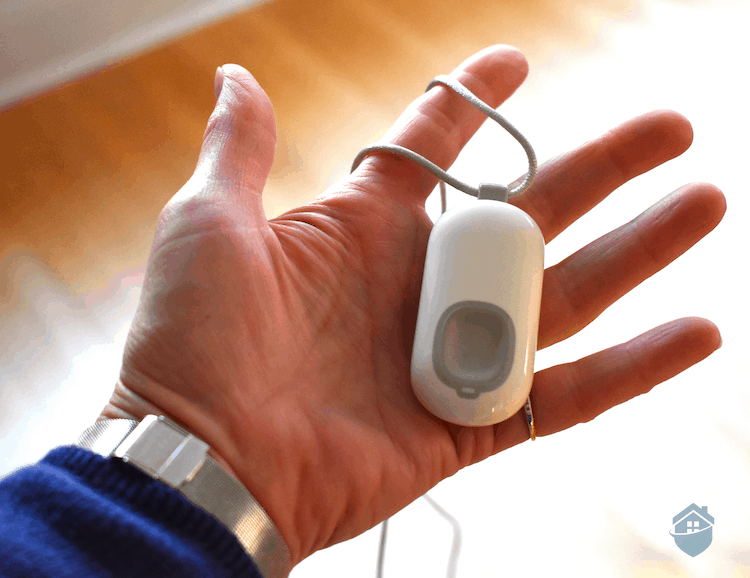
Lifeline Wearable Pendant
Lifeline keeps their add-on offerings and upgrades simple; they sell just a few for those who want to customize their systems. If you or your loved one wants a little extra peace of mind, take a look at the following products.
| LifeLine Equipment | Description | Price |
|---|---|---|
| Lockbox | Comes with a combination lock / stores a key for emergency personnel | $29.95 each |
| Voice Extension | An additional two-way talk communicator to extend the range in your home | $10 per month |
| Medication Dispenser | An app-connected dispenser that releases medication doses at preset times | $59.95 per month |
Out of the three offerings, I think the lockbox is the wisest investment. If you press the help button to contact the monitoring system, Lifeline shares your lockbox code with EMS. This allows paramedics to enter your home without having to damage a window or break down a door. Other brands sell lockboxes at similar prices.
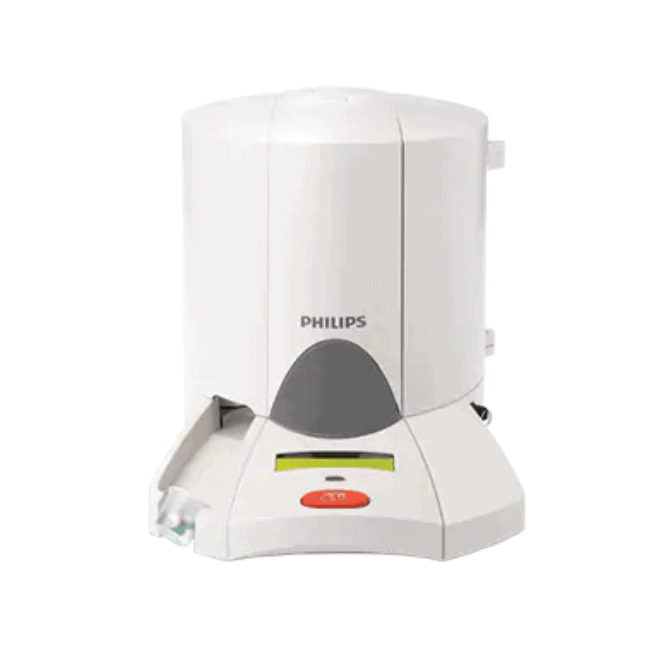
LifeLine Medication Dispenser
A unique extra that Lifeline offers is its medication dispenser. Other brands have medication reminder services that cost much less, but the Lifeline option actually dispenses medication, which helps to reduce the chance of dosage errors. Note that the Lifeline product can hold up to 60 doses at a time, and each dose is released in a small cup at a preset time. If you’re interested in an option that costs less up front but includes a reminder service, read my review of Lively alert systems.
Finally, watch for an updated version of the medication dispenser, which Lifeline is currently developing.
FYI: The Lifeline medication dispenser has a rechargeable battery and provides up to 18 hours of backup power during an outage.
Lifeline medical alert systems are compatible with Philips Cares, a free app for caregivers. A main benefit is that the primary caregiver can create a Care Circle of people for Lifeline to contact in case of emergency. (Of course, Lifeline can call EMS, too.) Each contact can share their availability within the app.
Also, Philips Cares allows caregivers to share notes and other important details with one another. It has handy wellness rating categories too, like “Memory,” “Mobility,” and “Mood.” I really like how the app automatically charts these ratings; you can easily see trends in your loved one’s well-being.
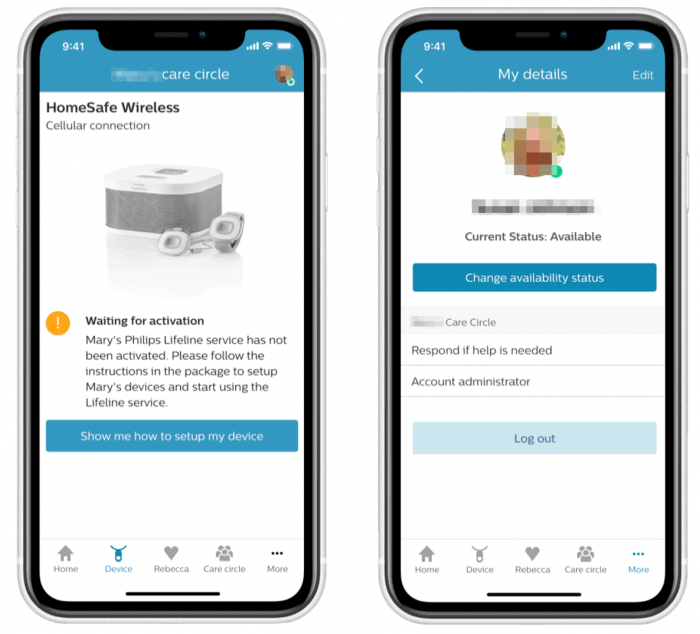
Philips Cares Mobile App
It’s worth mentioning that Philips Cares has mostly 5-star ratings at the Google Play Store.2 It’s also well-rated in the Apple App Store, although people have complained that the iOS version is buggy. That said, Lifeline releases app upgrades pretty frequently to improve service.
At this point, the app is a nice freebie to complement the Lifeline system. However, other free apps for caregivers are readily available, so I wouldn’t use it to account for the price difference between Lifeline and other brands. If/when location detection for caregivers is added to the app — well, that’s a different story.
If you value GPS location tracking and other neat caregiver features, you may want to check out our review of Aloe Care Health. This system offers unique at-home features such as motion and air quality sensors.
LifeLine sells systems for in-home and on the go. For in-home coverage you can choose between landline and cellular units. For mobile coverage, On the Go is a great choice. It offers fall detection, two-way talk, and location detection.
HomeSafe Standard is available for landline or cellular service. It includes a base station with a speaker and a waterproof button to wear around your wrist or neck. This button can connect with the base station from a few hundred feet away. (Lifeline doesn’t get specific about range, unfortunately.)
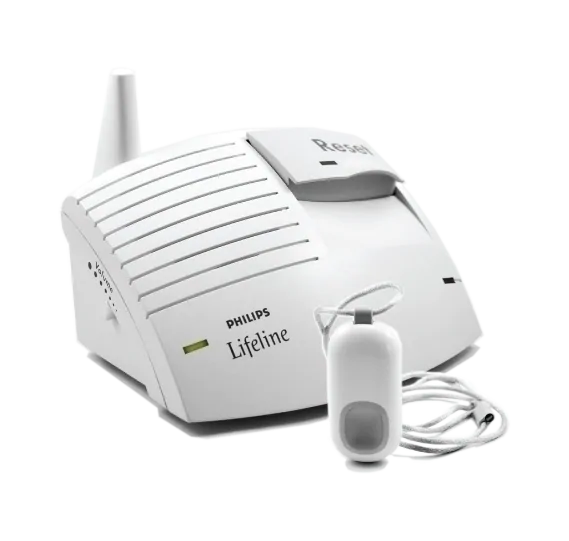
Lifeline Homesafe Base Station
A highlight of the HomeSafe Base Standard is the button’s battery life which lasts for years. Also, the base station has a 30-hour battery in case home power is lost. This system is cheapest with a landline connection at $29.95 per month. But if you choose cellular service, it costs $43.95 monthly. If you go with the more advanced HomeSafe system with Auto Alert, it’ll be $44.95 per month with a landline connection, and $58.95 for cellular. For context, the industry average is roughly $28 to $35 per month.
Who It’s Best For: The Lifeline HomeSafe Standard is made for homebound seniors who decide against fall detection.
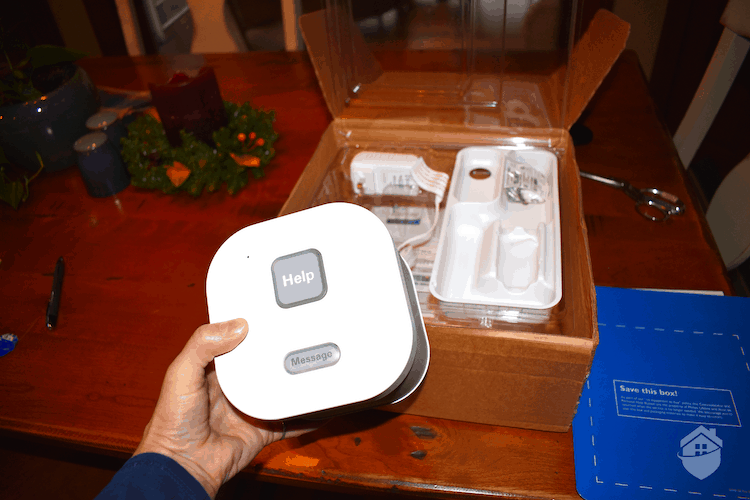
Lifeline HomeSafe with AutoAlert
AutoAlert is Lifeline’s name for automatic fall detection. HomeSafe with AutoAlert is identical to HomeSafe Standard except for the fall detection upgrade. These systems are available with landline and cellular base stations, and typically a base station can monitor a button from other rooms of the house. However, you’ll get a longer range with most other brands.
I like that the plug-in base system has a 30-hour battery in case of a power outage. The monthly rate is $44.95 with a landline connection and $58.95 with Lifeline’s wireless AT&T connection.
Who It’s Best For: HomeSafe with AutoAlert is best for seniors who spend most of their time at home and want the extra protection of automatic fall detection.
Good To Know: AutoAlert was developed through thousands of hours of testing. It’s been shown to detect about 95 percent of falls, and false alerts are relatively rare.3
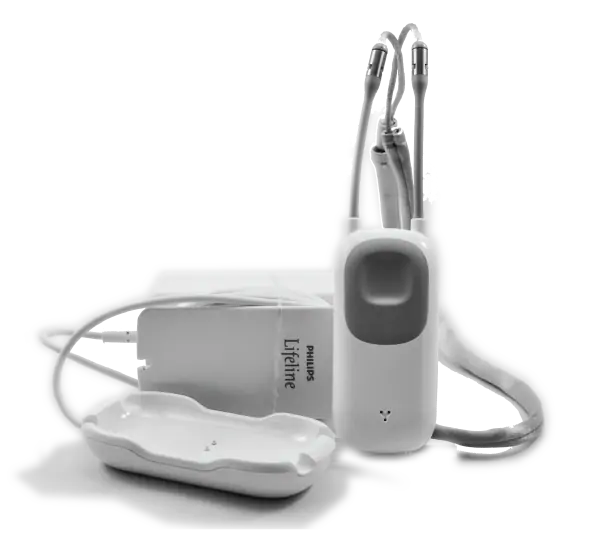
Lifeline On the Go
Like any true mobile unit, Lifeline On the Go offers emergency coverage anywhere it catches an AT&T cellular signal. And I appreciate the all-in-one design, as mobile devices from some other brands require both the mobile device and a fall detection button while out and about.
Also impressive is Lifeline’s use of Advanced GPS, or A-GPS, for especially fast location tracking. Lifeline also uses Wi-Fi to track access points in indoor spaces. Finally, you’ll like how it’s shower-safe and works for up to 72 hours per charge. Lifeline requires an upfront $99.95 activation fee and charges $49.95 per month, which includes fall detection.
Who It’s Best For: This convenient system is best for seniors who want protection at home and away and who also want fall detection.
Pro Tip: GoSafe2’s audio beacon is a one-of-a-kind feature. A loud siren-like noise is emitted from the pendant during an emergency situation if the personal response agent or first responders are having difficulty locating the user.
Lifeline has a longstanding deal with AARP: Members can save 15 percent on monthly medical alert service. Also, shipping and activation may be free. Without an AARP discount or other deal, Lifeline activation costs $50 for at-home systems and $99.95 for the On the Go device.
Military members are also eligible for special savings. These vary, but be sure to ask for military discounts if you’re part of a military family. If you happen to be a veteran, read our guide to the best alert systems for veterans.
If you are someone looking for different ways to save money on a medical alert system, you might want to read my analysis of LifeFone.
| HomeSafe Standard | HomeSafe with AutoAlert | On the Go |
|---|---|---|
| $29.95/mo | $44.95/mo | $49.95/mo |
| + $79.99 Upfront Costs* | + $79.99 Upfront Costs* | + $99.95 Upfront Costs* |
| View Packages | View Packages | View Packages |
| Services | Services | Services |
| Wide Range of Operation | Fall Detection | Fall Detection |
| Two-Way Voice Communication | Two-Way Voice Communication | Two-Way Voice Communication |
| Uninterrupted Support | 5 Locating Technologies | 6 Locating Technologies |
| 24/7 Access to Response Centers | 24/7 Access to Response Centers | 24/7 Access to Response Centers |
| GPS Enabled | GPS Enabled | |
| Automatic Self-Testing | ||
| Landline or Cellular Connection | ||
| Equipment | Equipment | Equipment |
| Water Resistant Pendant or Wristband | Waterproof Pendant | Waterproof Pendant |
| 30-Hour, Worry-Free Battery with Automatic Replacement | Rechargeable Battery | Rechargeable Battery |
| HomeSafe Communicator with High-Fidelity Speakers and Microphone | GoSafe In-Home Communicator with High-Fidelity Speakers and Microphone | |
| 30-Hour Battery Backup | ||
| Options | Options | Options |
| Professional Installation | Professional Installation | Professional Installation |
| Automated Medication Dispensing Service | Automated Medication Dispensing Service | Automated Medication Dispensing Service |
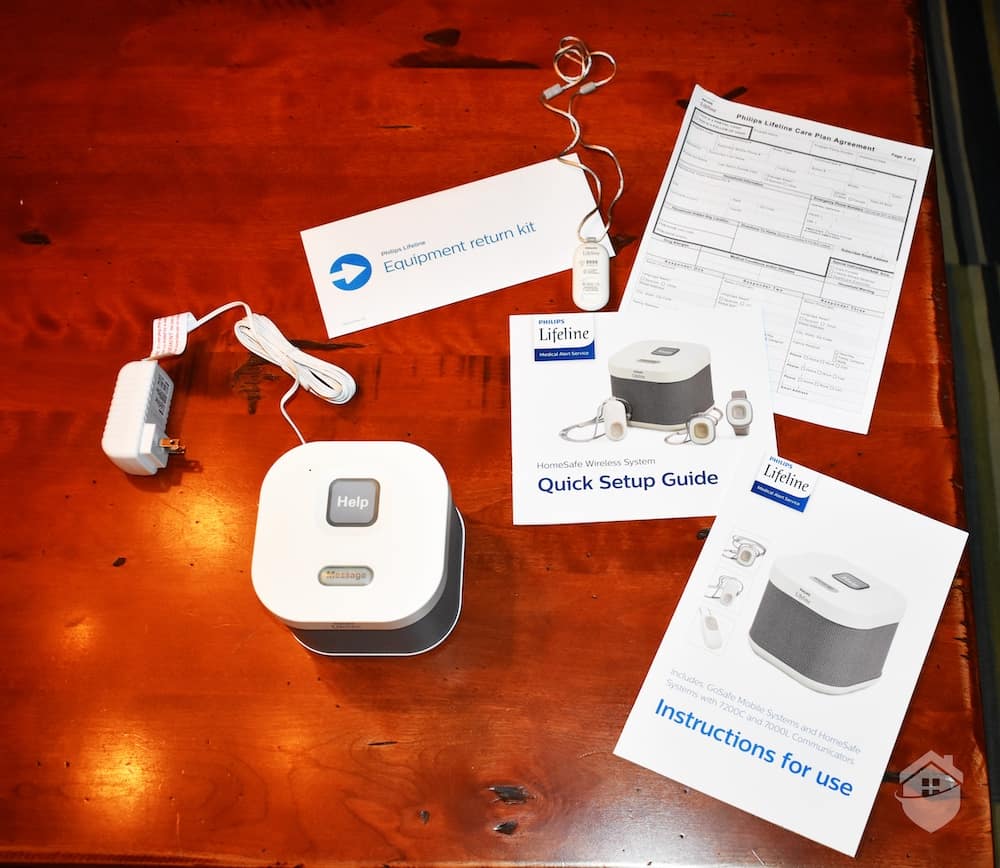
Lifeline HomeSafe with AutoAlert
Lifeline monitoring prices are slightly high, as noted above. Keep in mind they also charge fees for activation and self-installation. These fees might be waived if you’re a member of the military or AARP… but in my opinion, nobody should have to pay these extra charges. Thankfully, Lifeline offers free equipment for their systems, which is typical among the highest- rated brands.
Among Lifeline’s greatest strengths are the features on its all-in-one On the Go device. The location detection is advanced, employing both advanced GPS and Wi-Fi. This feature will bring peace of mind to caregivers of loved ones living with dementia, among other medical conditions. I look forward to experiencing the potential addition of location detection for caregivers on the Caregiver app.
In the end, Lifeline is a trusted brand, and for those who don’t mind paying a little bit extra, it’s a product that will likely not disappoint older adults or their caregivers.
FYI: If you aren’t happy with your Lifeline system, you can return it within 30 days for a refund on equipment and monitoring. However, you may still be charged for activation and restocking.
Dating back to 1972, Lifeline was the first medical alert brand to serve North America. It was the brainchild of the late Dr. Andrew Dibner, a gerontology-focused professor at Boston University. He grew the company with his wife Susan Dibner, a social worker by training. At first, they marketed Lifeline systems to hospitals. Then in the early 1980s, Lifeline became available for home use.4 Their first mobile unit, GoSafe, hit the market in 2014.
Lifeline was acquired by Royal Philips in 2006. Since the sale, the company has maintained a strong reputation with seniors and their loved ones. You can learn more about the brand background in our recent LifeLine review.
HomeSafe makes replacing batteries simple for users. The AutoAlert button has a non-rechargeable battery that can only be replaced by Lifeline. When the battery has about 30 days remaining, it will send a signal to Lifeline and a representative will contact you to make arrangements for the replacement. The base station uses a backup battery in case of a power outage, which is good for up to 30 hours.
Yes, the pendant can and should be worn in the shower, as falls can occur in the bathroom. However, it should not be worn in a pool as chlorine can damage the device. Heat can also damage it, so it should be removed before using a sauna or hot tub.
You don’t need anything special. The base station connects to the monitoring center, using the AT&T 4G wireless network. The wireless service is provided with the Lifeline service. No additional wireless equipment is needed.
Voice extension is a feature that requires an additional box with a speaker enabling two-way talk to take place with the base station from another room. Lifeline only offers a voice extension feature for an additional $10 per month and only for those using a landline. Unfortunately, when I inquired with a company representative about the maximum distance that a voice could be picked up when using the voice extension, the representative was unable to answer with any certainty.
Lifeline offers a 30-day, money-back guarantee and a one-year warranty on its products.
Chaudhuri, Shomir. (2015, Oct 1). Fall Detection Devices and their Use with Older Adults: A Systematic Review. US National Library of Medicine.
https://www.ncbi.nlm.nih.gov/pmc/articles/PMC4087103/
Google Play Store. (2021). Philips Care Assist C.03.
https://play.google.com/store/apps/details?id=com.philips.CareTouch.B00&hl=en_US
LifeLine. (2021). Automatic Fall Detection.
https://www.lifeline.philips.com/medical-alert-systems/fall-detection.html
Flippo, Robert. (2019, July 17). The Industry Tips its Hat to Andrew Dibner. LinkedIn.
https://www.linkedin.com/pulse/industry-tips-its-hat-andrew-dibner-robert-flippo/